RelatedPosts
Shortlister surveyed more than 125 of the nation’s top benefit consultants to better understand the current wellness landscape. These consultants represent thousands of major companies across the United States – businesses that cover millions of lives in total.
This survey was intended to give a snapshot of the ever-changing employee wellness space: what wellness areas companies are investing in, where consultants expect companies to invest in the upcoming year, and technology changes within wellness platforms.
Of course, 2020 brought far more turbulence than a typical year, and with that change came new obstacles. Consultants were also surveyed about the impact the COVID-19 pandemic had on the employee wellness market, as well as how diversity, equity, and inclusion (DEI) efforts are being considered within wellness.
Corporate Wellness Trends: 2017-2020
The survey asked respondents eight high-level questions to better understand the purchasing trends of employers and how they are prioritizing workplace well-being overall. For each question we asked if a consultant’s clients are doing “More,” “Less,” or the “Same” of a behavior.
Overall, the majority of respondents say clients are prioritizing wellness as a business objective more than in the past. Mobile apps (and mobile access) are a priority, as are platform or hub technologies that act as the “front door” for employees to access all benefit related information and resources.
On the other side, outcomes-based wellness initiatives are on the decline.
In every edition of this prospectus, respondents said that their clients placed a higher priority on wellness as a business objective than they did in the previous year. As employee wellness prioritization becomes the norm, this growth has tapered since 2017, with a higher share of respondents indicating that wellness prioritization remains the same. Still, just three percent of respondents said wellness prioritization declined year-over-year from their clients.
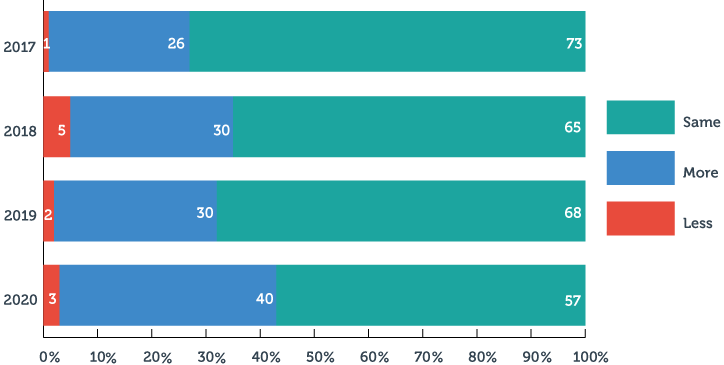
All-in-One vs. Point Solutions
“In the past year, have you seen more clients looking for an all-in-one vendor or piecing together point solutions?”
The Biggest Obstacles to Successful Multi-Point Solution Rollouts
Companies can choose to invest in employee wellness by purchasing an “all-in-one” solution that provides multiple solutions in one application, or by piecing together various “point solutions” that come from individual vendors. With the rising popularity of all-in-one solutions, we asked consultants about the biggest issues client experience when implementing multiple point solutions. Point solution vendors can use this data to create products that are more easily implementable. Companies adopting wellness point solutions can use the data to prepare for successful rollouts and improve adoption rates for their employees.
Implementing “Point Solutions” (Targeted Stand-Alone Interventions)
While a majority of consultants are seeing an uptick in point solution interest (above and to the right), the point solution migration seems to be leveling off in comparison to a few years ago. “Point solution fatigue” may be setting in for some buyers, and those that were interested in best-in-class, targeted interventions may be reaching a point of relative saturation. It will be interesting to see if the pendulum swings back the opposite way in the coming years.
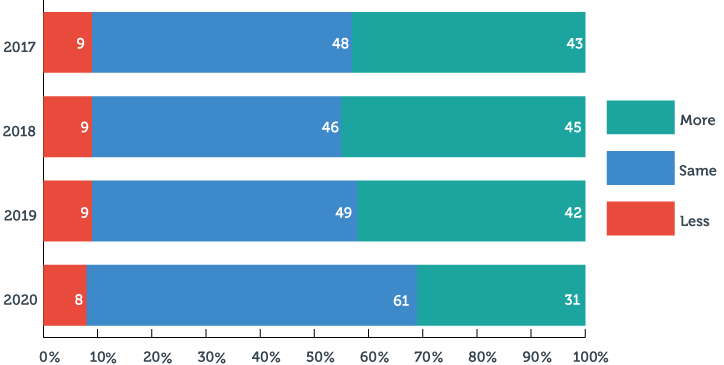
Consultants were asked to rank six obstacles from most impactful to least impactful:
1. Internal communications strategy (Most Impactful)
2. Integration across solutions
3. Employee awareness of capabilities
4. HR administration burden
5. Complexity of technology for employees
6 Multiple logins for employees (Least Impactful)
INTEREST IN
Behavioral Health
Behavioral Health offerings, which involve the connection between mental and physical health, saw massive interest growth following the start of the COVID-19 pandemic. As many employees dealt with isolation, loss, and changes in routine, employers quickly looked for programs to support them.
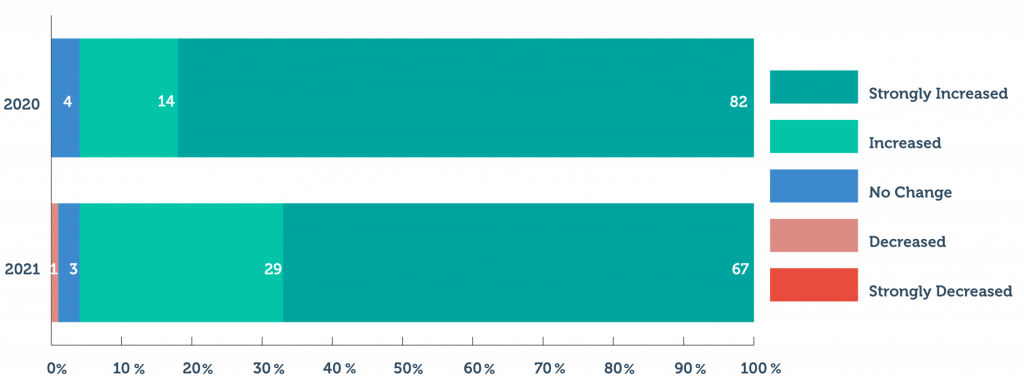
INTEREST IN Biometrics
An already-slowing interest in Biometric Screenings prior to 2020 was exacerbated by the pandemic and subsequent lockdowns and work-from-home policies. In-person solutions fell in interest across the board, and 88% of consultants reported a drop in Biometric interest. They do expect some bounce-back in 2021 as some portion of employees return to offices.
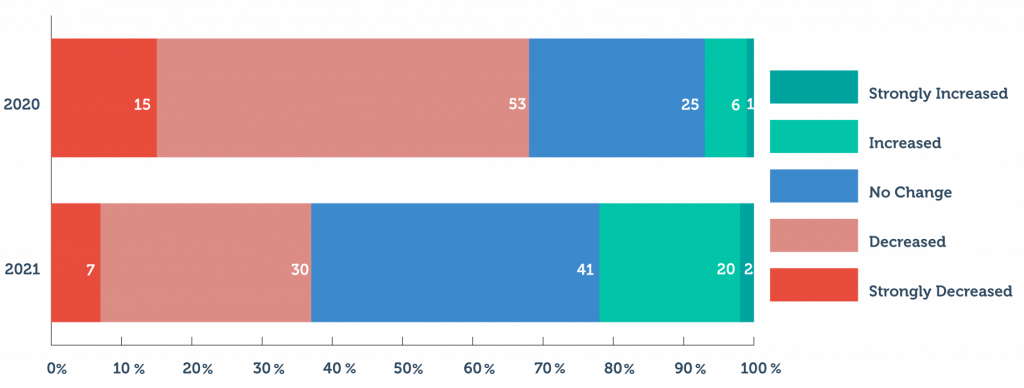
INTEREST IN Caregiving / Senior Support
For many, the global pandemic turned houses into offices, conference rooms, classrooms, and daycares. Parents struggled to balance overseeing remote learning with their own work responsibility.
At the same time, COVID-19 posed enormous health risk for seniors. Their families were often placed in difficult positions for how to provide care.
In response to these lifestyle changes and challenges for their employees, companies showed overwhelmingly increased interest in these programs. Consultants expect interest to continue growing in 2021.
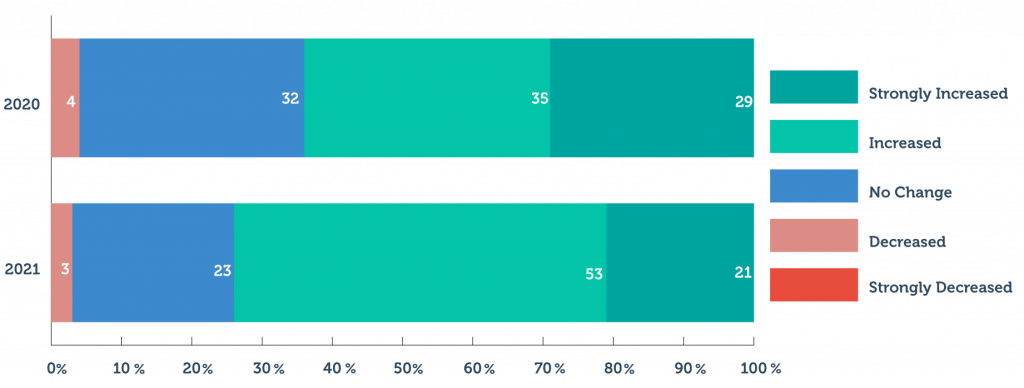
INTEREST IN EMPLOYEE ASSISTANCE PROGRAMs (EAP)
An already-slowing interest in Biometric Screenings prior to 2020 was exacerbated by the pandemic and subsequent lockdowns and work-from-home policies. In-person solutions fell in interest across the board, and 88% of consultants reported a drop in Biometric interest. They do expect some bounce-back in 2021 as some portion of employees return to offices.
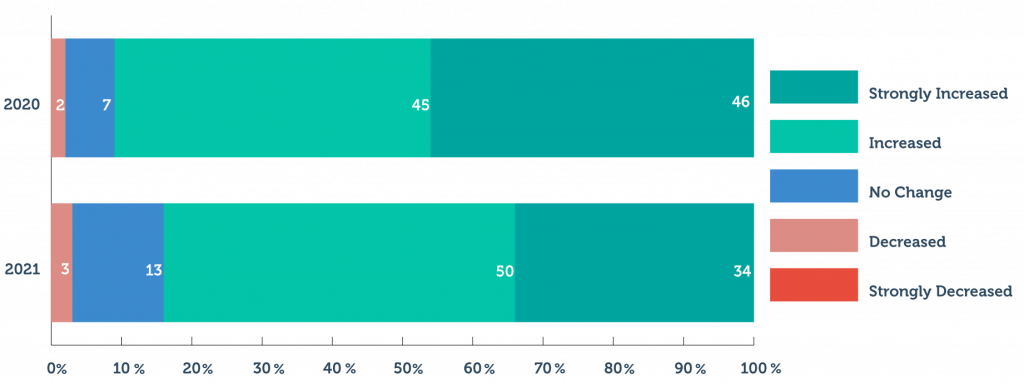
INTEREST IN
Diabetes Management
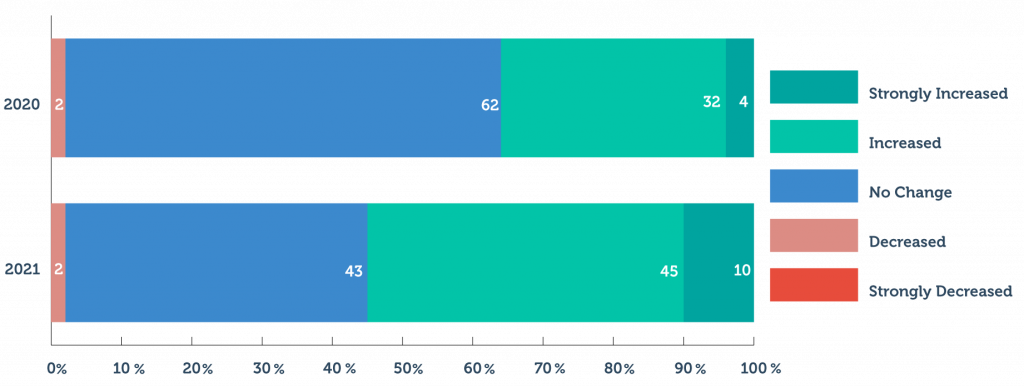
INTEREST IN Ergonomics / Musculoskeletal
For many in 2020, our dining room tables, couches and even bedrooms became our offices and workspaces. Without the constant presence of coworkers in an office, it became easy to relax posture or change other habits.
The change to work from home brings on different health challenges from an office environment, and employers are adjusting accordingly.
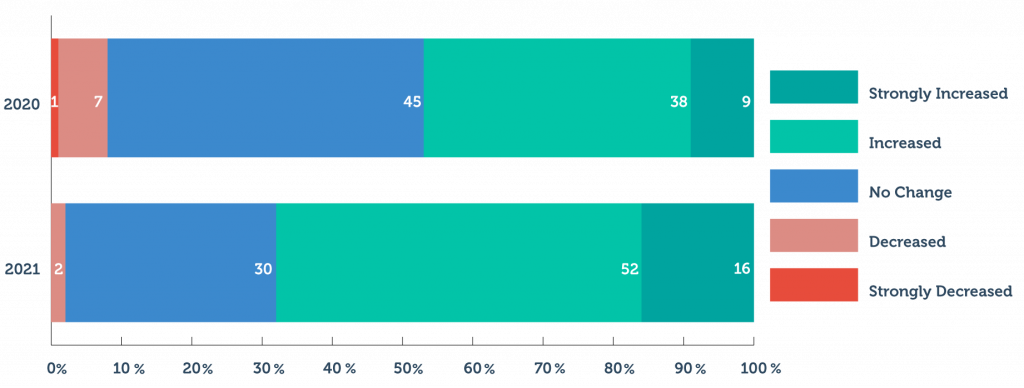
INTEREST IN Financial Wellness

INTEREST IN Women’s Health
The interest in women’s health programs was overwhelmingly unchanged in 2020 according to respondents with a slight downtick. Consultants see much of the same in 2021, with a slight rebound — perhaps as pandemic-driven programs lose momentum.
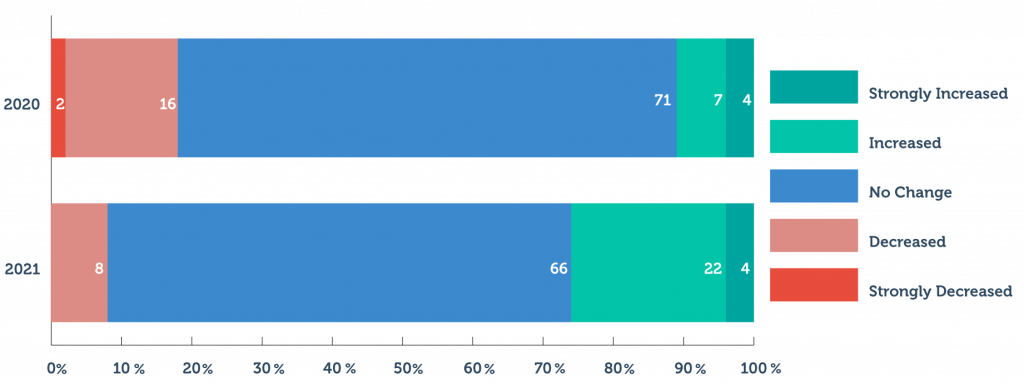
INTEREST IN Telehealth
Of the 11 wellness programs listed in the survey, none saw a bigger shift in market interest than Telehealth. As other areas of life moved virtual — work, school, social, etc. — medicine followed suit, and employers adapted swiftly in 2020.
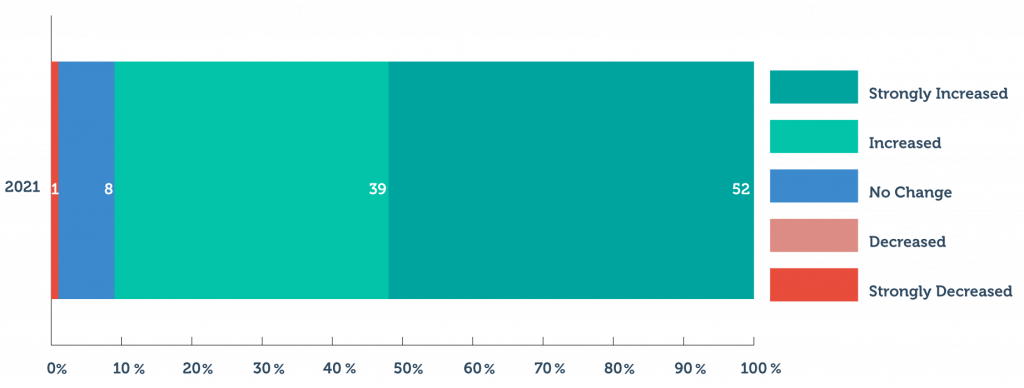
INTEREST IN Fitness /Weight Management
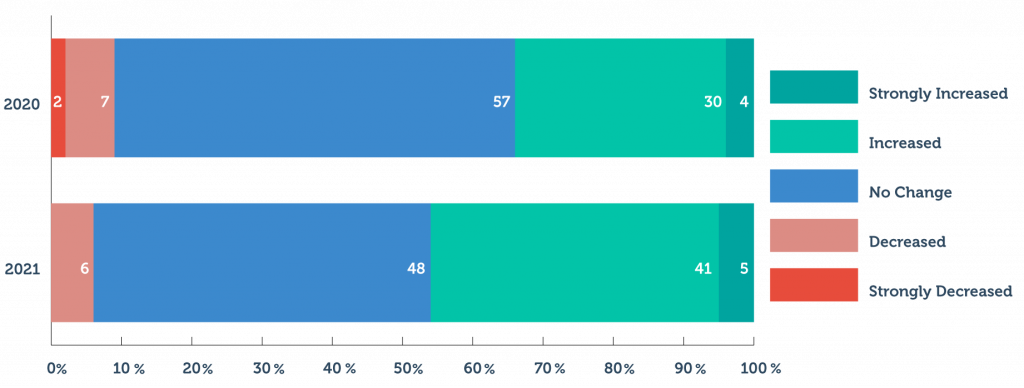
INTEREST IN Sleep Management
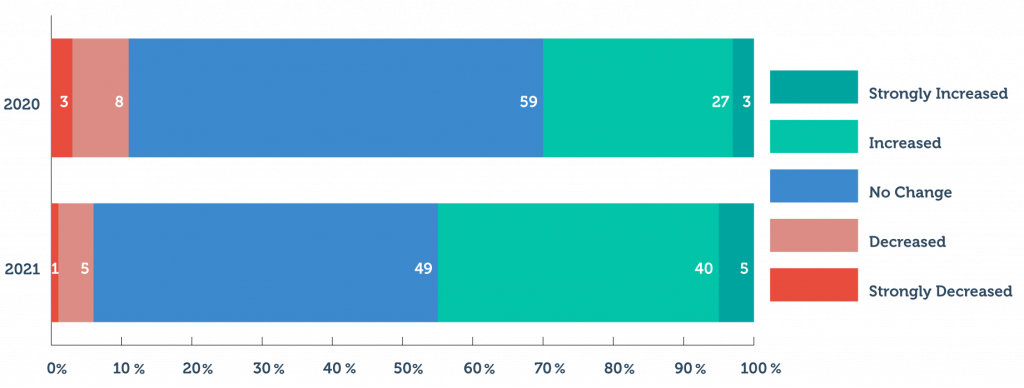
INTEREST IN Tobacco Cessation
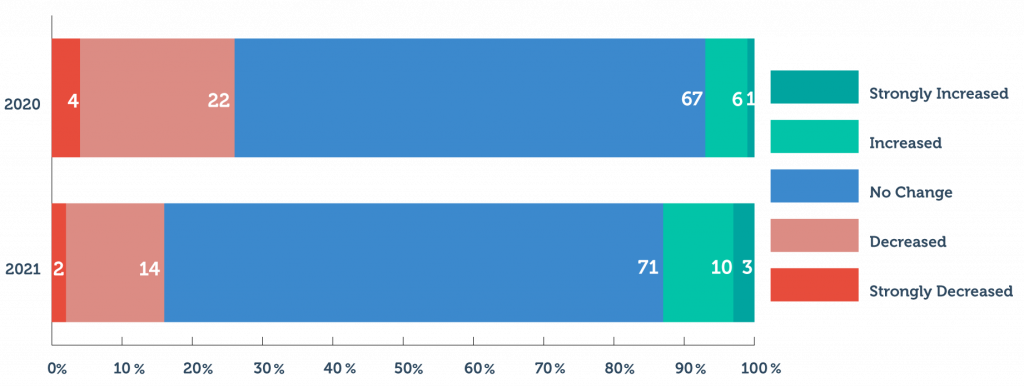
Buying/Kicking Tires
Diversity, Equity, and Inclusion (DEI)
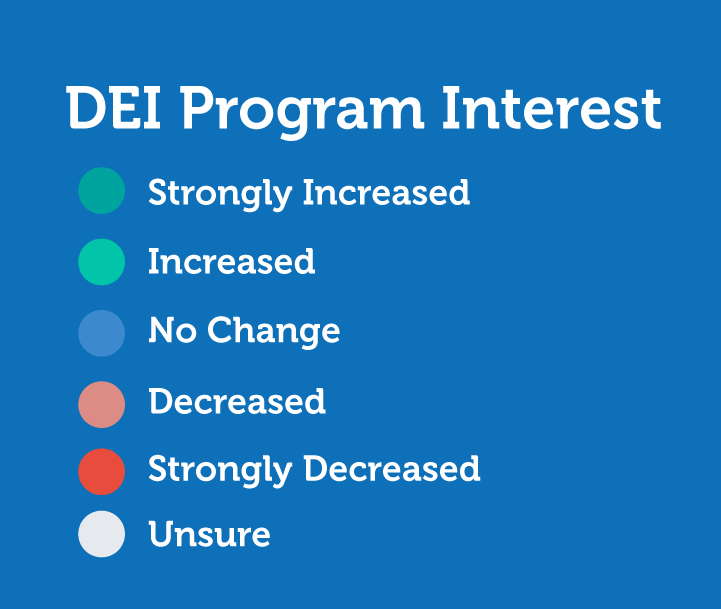
On average, an estimated 32.6% of respondents’ clients are incorporating diversity, equity, and inclusion objectives into their overall wellbeing strategy.
INTEREST IN Corporate Social Justice Consulting

INTEREST IN
DEI Consulting

INTEREST IN
DEI Training

INTEREST IN EEOC Compliance

INTEREST IN
DEI Assessments
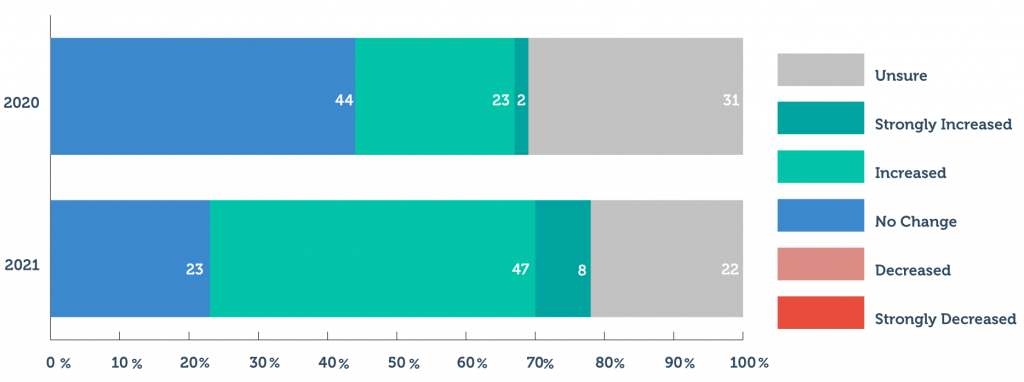
INTEREST IN
Pay Equity Assessments
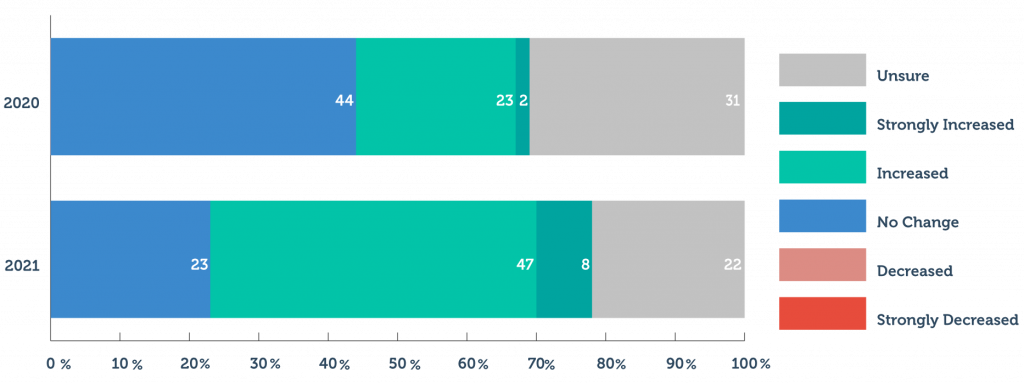
INTEREST IN
Affirmative Action Compliance
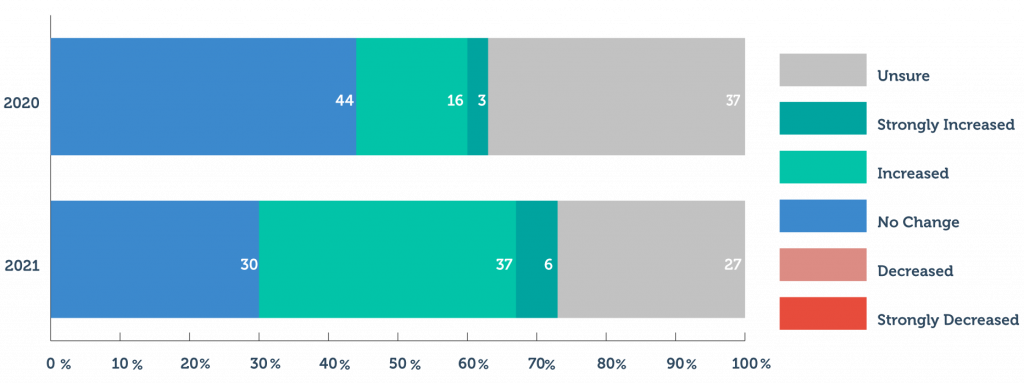































Discussion about this post